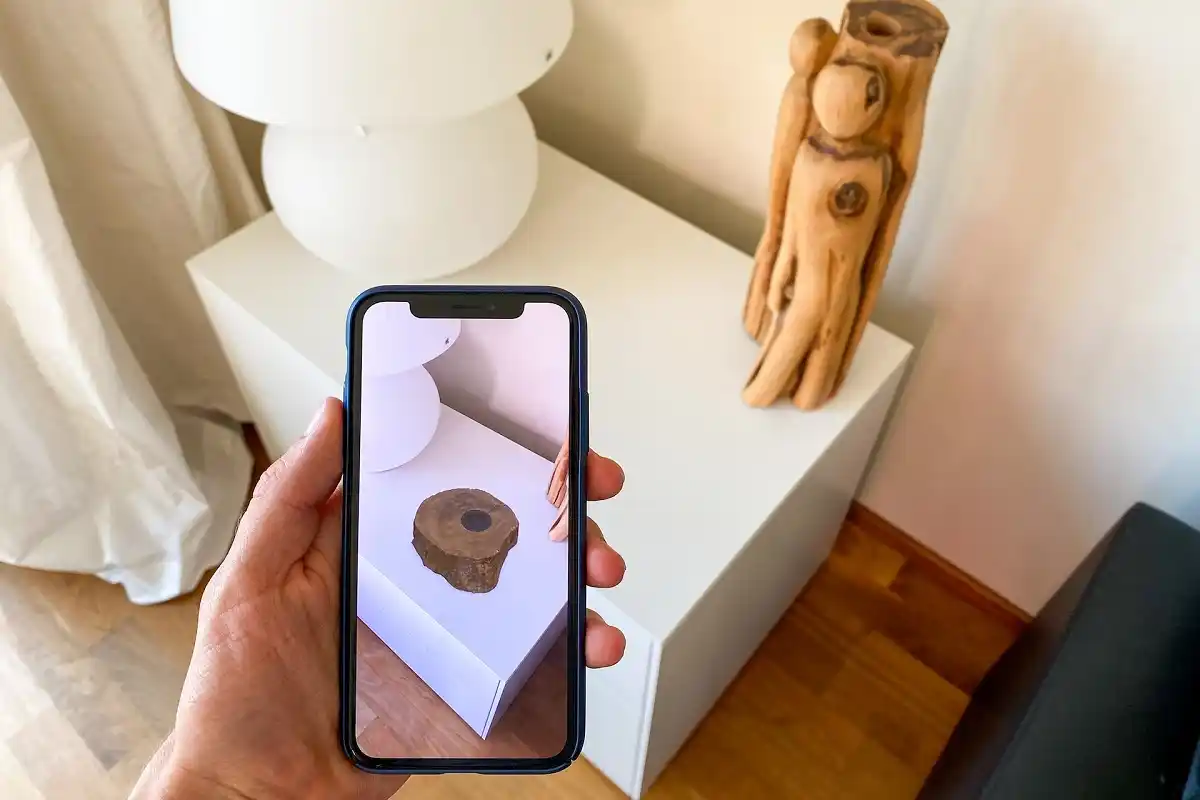The mobile app industry is constantly evolving, and one technology that has gained immense popularity in recent years is augmented reality (AR). AR technology allows developers to create apps that blend the real world with digital elements, enhancing the user experience and creating new possibilities for engagement.
Integrating AR in mobile apps is a trend that has caught the attention of many businesses across different industries, from retail and education to healthcare and entertainment. In this blog, we will explore the benefits of integrating AR into your mobile app and provide insights into how to leverage this technology to create more engaging, innovative, and valuable experiences for your users.
The Growing Popularity of AR
The growing popularity of AR technology has had a significant impact on the app development industry in recent years. The use of AR in mobile apps has exploded, with both developers and users recognizing the value that it brings. The technology allows developers to create more engaging and interactive experiences for their users, making mobile apps more immersive and exciting.
Furthermore, the rising popularity of AR has led to the development of a wide range of AR-focused tools and frameworks, making it easier for developers to create AR-enabled apps. The rise of AR is also driving innovation in the industry, encouraging businesses to explore new ways to use the technology to create more value for their users. As AR technology continues to advance and mature, it is clear that it will play a significant role in the future of the app development industry.
Real-World Use Cases of AR in Mobile Apps
AR technology has been successfully integrated into mobile apps across various industries to create a more immersive and engaging experience for users.
- In the retail industry, AR technology has been used to create virtual try-on features, enabling users to visualize how products will look on them before making a purchase.
- In the education industry, AR technology has been used to create interactive learning experiences, enabling students to visualize and interact with complex concepts.
- In the healthcare industry, AR technology has been used to create apps that enable medical professionals to visualize patient anatomy and perform procedures with greater precision.
- In the entertainment industry, AR technology has been used to create interactive games and experiences that bring characters and storylines to life.
These are just a few examples of how different industries are leveraging AR technology to enhance the user experience in mobile apps. By using AR, businesses can create innovative and engaging experiences for their users, leading to increased customer satisfaction, retention, and revenue.
Technical Considerations for AR in Mobile Apps
Integrating AR into mobile apps requires a wide range of technical considerations. AR technology involves complex algorithms that must be optimized for mobile devices with limited resources. Therefore, developers need to use specialized tools, frameworks, and libraries to create AR-enabled mobile apps efficiently.
AR development kits such as Apple’s ARKit and Google’s ARCore provide developers with a pre-built set of tools and libraries for AR development, including motion tracking, environment recognition, and light estimation. These kits help developers create AR experiences with ease and speed, without the need for specialized knowledge in AR technology.
Other technical considerations include the integration of computer vision algorithms, optimization of graphics and memory usage, and selection of appropriate hardware. With the right technical considerations in place, developers can create AR-enabled mobile apps that are efficient, user-friendly, and offer an exceptional user experience.
Designing for AR
Designing an AR experience requires a unique approach that takes into account the user’s physical environment and the digital content that is overlaid on top of it.
One of the primary considerations when designing for AR is to ensure that the experience is user-friendly and engaging.
To achieve this, designers must focus on creating intuitive user interfaces that allow users to interact with the digital content seamlessly. They must also consider the physical environment, ensuring that the digital content is visible, legible, and appropriately placed in the user’s field of view.
Additionally, designers should consider the type of AR experience they are creating, whether it’s a marker-based or markerless AR experience, and how they can make it more engaging and immersive. This can include incorporating gamification elements, such as points, badges, and rewards, or using sound effects, animations, and other sensory inputs to create a more immersive experience. By focusing on user-friendliness and engagement, designers can create AR experiences that are enjoyable, intuitive, and valuable for users.
Future of AR in Mobile Apps
The future of AR technology in mobile apps is incredibly promising and has the potential to transform the way we interact with digital content. With the advancement of AR technology, we can expect to see increasingly sophisticated and immersive experiences that are seamlessly integrated into our everyday lives.
For instance, the use of AR in e-commerce is expected to become more prevalent, allowing users to shop for products in a virtual store, and preview them in their own homes using AR-powered product visualization. The use of AR in healthcare is also expected to grow, with medical professionals using AR to train, diagnose, and treat patients.
Additionally, the future of AR in mobile apps is expected to bring new opportunities for education, tourism, gaming, and more.
As the technology continues to advance, we can expect to see greater integration of AR with other emerging technologies, such as artificial intelligence and 5G networks. All these developments point to a future where AR plays an increasingly significant role in the mobile app development industry, opening up new possibilities for businesses to create innovative and engaging experiences for their users.
Challenges in AR Mobile App Development
AR mobile app development has opened up new opportunities for creating immersive and engaging experiences for users. However, it comes with several challenges and limitations that developers need to consider. One of the significant challenges is ensuring that the app can accurately track and respond to changes in the user’s physical environment in real time. This requires complex algorithms to process large amounts of data, which can put a strain on the device’s resources.
Moreover, integrating AR content into the app’s user experience and ensuring that it aligns with the overall design and functionality of the app can be challenging. Another significant challenge is creating intuitive user interfaces that enable users to interact seamlessly with the AR content. Developers also need to ensure that the app’s performance is not compromised while delivering high-quality AR experiences. This is especially critical on mobile devices with limited processing power, memory, and battery life.
Furthermore, creating high-quality AR experiences often requires specialized knowledge and expertise, which may not be available to all developers. Overall, the challenges and limitations in AR mobile app development require developers to invest in specialized tools, frameworks, and libraries, and stay up-to-date with the latest trends and advancements in AR technology to deliver high-quality, seamless, and engaging AR experiences for their users.
Cost and ROI of AR Mobile App Development
The cost of developing an AR mobile app can vary greatly depending on several factors, such as the complexity of the app, the size of the development team, and the level of expertise required. While AR app development can be more expensive than traditional app development, it offers the potential for higher returns on investment (ROI). By creating a more engaging and immersive experience for users, businesses can differentiate themselves from their competitors and increase customer engagement and loyalty.
Moreover, businesses can use AR to generate new revenue streams, such as in-app purchases, advertisements, and sponsorships.
Additionally, AR can also help businesses reduce costs by providing more efficient and cost-effective ways to train employees, improve product visualization and prototyping, and enhance customer support. As such, the ROI of AR mobile app development can be significant, making it a worthwhile investment for businesses looking to stay ahead of the competition and offer a more engaging and valuable experience for their users.



